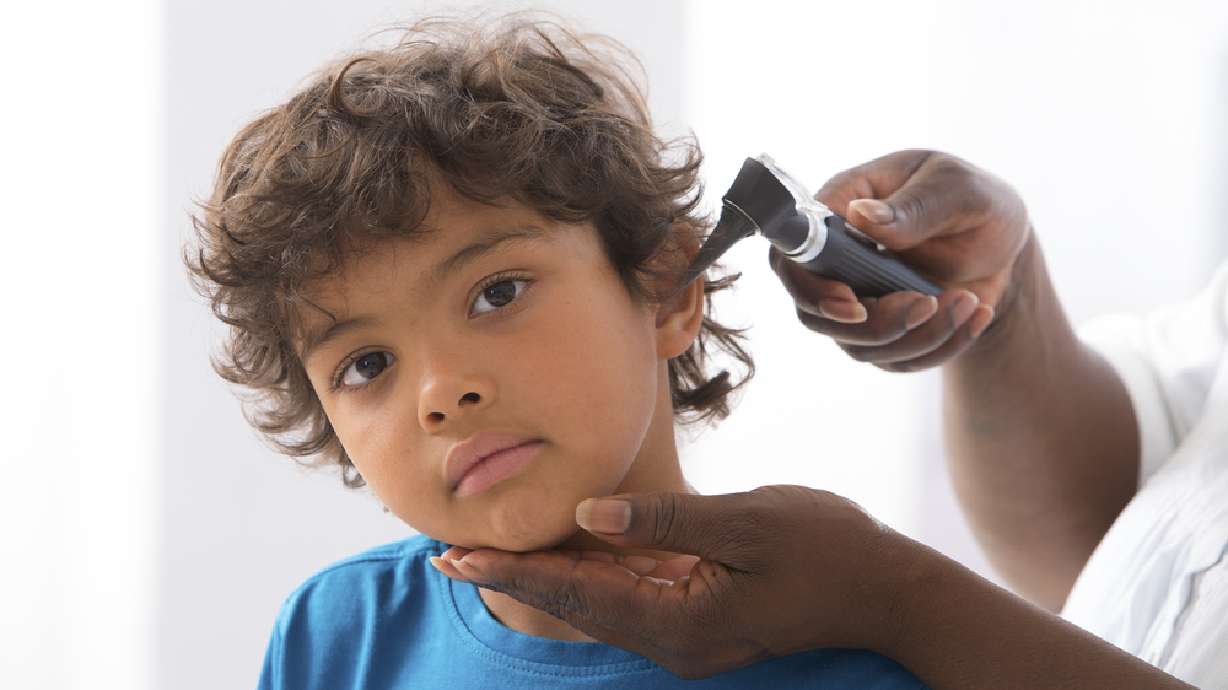Estimated read time: 4-5 minutes
This archived news story is available only for your personal, non-commercial use. Information in the story may be outdated or superseded by additional information. Reading or replaying the story in its archived form does not constitute a republication of the story.
SALT LAKE CITY — The health of Utah's minorities has shown little improvement over the past five years, according to a report from the Utah Department of Health.
Lead author Jake Fitisemanu, a health program specialist with the office, said he was disappointed to see that African-American, Pacific Islander and Latino Utahns continue to show significantly higher levels of obesity, infant mortality and other negative health measures that have persisted since at least 2005, when the department's Office of Health Disparities started tracking the statistics.
"We didn't seem to improve a whole lot in some of these measures that we've definitely been intending to improve," Fitisemanu said. "Being an optimistic person and seeing the great work and the funding and initiatives and projects that have been going on in the last few years, I think we all kind of expected to see a little bit more improvement."
Minorities accounted for nearly 40 percent of Utah's population growth last year, according to recent U.S. census data, much of that due to growth in the Latino community.
Managing that explosion of diversity can be difficult for health care providers, said Jose Esparza, a nurse practitioner at Central City Community Health Center.
Esparza estimated that 70 percent of the Central City clinic's patients are minorities. Most are Latino, but the center also serves significant numbers of Native Americans and refugees, he said.
- More than 82 percent are overweight or obese, compared to 59.4 percent of white adults.
- Nearly one in three Pacific Islander or native Hawaiian adolescents is obese, compared to one in 13 white teens.
Due to that, different cultural attitudes toward health are something that providers have to navigate on a daily basis.
That often involves focus on specific health issues, such as diet and obesity, and gaining patients' trust.
"Childhood obesity is something that we find a lot," Esparza said. "In some cultures, they see an obese child as being healthy."
But a lot of it also includes dealing with factors like poverty, overcoming language barriers and guiding them through a complex health insurance system.
That comes to bear in issues like infant mortality, which has been a priority for Fitisemanu's office.
A few years ago, Pacific Islanders in Utah had the lowest rates of prenatal care and the highest rates of infant mortality among all racial groups.
That's largely still the case today, according to the latest report, which draws on data from 2011 to 2013, the latest available.
The only significant change is that infant mortality has also climbed in the African-American population to nearly twice the rate of infant mortality among white infants.
Obesity also continues to be an issue for Pacific Islanders and native Hawaiians. More than 82 percent are overweight or obese, compared to 59.4 percent of white adults, according to the report. And nearly one in three Pacific Islander or native Hawaiian adolescents is obese, compared to one in 13 white teens.
There were some bright spots, Fitisemanu said, though not many.
The Asian community scored well on many health measures, including highest rate of mammograms and vegetable consumption and the lowest rates of obesity.
The colon cancer screening rate for Native American adults aged 50 or older also increased 70 percent from the 2005 report, likely due to a campaign the health department launched in partnership with the Urban Indian Center, Fitisemanu said.
But Fitisemanu said the fact that the needle hasn't moved shows how health is inextricably tied to other factors like income, education and access to culturally-appropriate health care.
The report found that American Indian or Alaska Native people were twice as likely to report having no health insurance, and Hispanic/Latino people were three times as likely.
That's probably improved since the passage of President Barack Obama's health care law, said Randal Serr, the director of Take Care Utah. But it's "still going to be relatively high," he predicted.
He called on the state to help get more people insured, particularly children.
Utah has the second-highest rate of children who qualify for Medicaid or CHIP but aren't signed up, he said. The biggest disparity is among Hispanic children in Utah, who have double the uninsured rate as Hispanic children nationally — 22 percent compared to 11 percent.
"That's the biggest glaring issue that we see," said Serr.
Many Hispanic and Latino patients are fearful and confused about their options for health insurance and avoid going to the doctor until something really bad happens, according to Esparza.
"A lot of them, even when their kids can go on Medicaid, they don't want to do anything, because they think that's going to affect them in the future if they want to apply for legal status," Esparza said.
And he pointed out that providers in the Central City clinic see evidence every day that poverty and health are linked.
All of Utah's minority populations have a higher rate of poverty than white Utahns, according to the report.
"Given the choice between food and medication, it's going to go for food," Esparza said. "And it won't be the healthiest food."
"We need to invest in health," Esparza added. "It's a future generation. How are we going to expect to get another generation healthy?" Email: dchen@deseretnews.com Twitter: DaphneChen_








